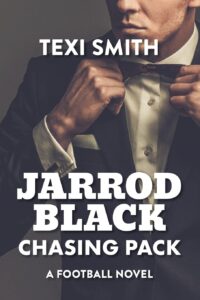Book Review – Aberdeen Greatest Games: The Dons’ Fifty Finest Matches by Kevin Sterling
 Aberdeen are a powerhouse. One of only two teams in Scotland who have never been relegated, they have been there or thereabouts in cups, leagues and European competition for a long, long time. Kevin Stirling has brought 50 of their finest 90 minutes to print with a clear love for the club and for the people behind it.
Aberdeen are a powerhouse. One of only two teams in Scotland who have never been relegated, they have been there or thereabouts in cups, leagues and European competition for a long, long time. Kevin Stirling has brought 50 of their finest 90 minutes to print with a clear love for the club and for the people behind it.
As a club – aside from the 1980s and more of that later – there are plenty of cup triumphs and stories around their formation as well as more recent and more modest examples of their role at the pinnacle of Scottish football. As such there is a lot for a non-Aberdeen fan, like me, to relish. There are stories of yore including the Great Mystery scandal, their first Cup Final experience in front of a crowd of “at least” 146,433, a tour to South Africa in the 1930s by boat, their first cup final win in 1947 in front of a more modest 135,000, their engagement in the Scottish Qualifying Cup, the Victory Cup and the USA Presidents Cup, the emergence of one Teddy Scott from Sunnybank, their first floodlit match in Leeds, their first championship in ’55 and then the troubles of ’56 before the start of two defining decades. The 1970s began with a Scottish Cup and the 1980s ended with one of the most successful spells in Aberdeen history thanks to two Alexs – Sir Alex Ferguson and Alex Smith – who in 1990 ended the decade as they began 20 years before – with a Scottish Cup win.
As a fan of another club, I was obviously interested to see how a couple of ex-players fared as managers, Sir Alex Ferguson I knew, but Ally MacLeod, who had a successful spell at the club in the mid-1970s before the ignominy of Argentina as boss of Scotland, is very well treated here. I was glad to see that there is a degree of affection for his time in a balanced manner. But it is not for that reason alone that I enjoyed the book.
The level of detail and the overview suggests that Kevin Stirling, author of many books on the club before this one could easily expand this from 50 matches to an official history of the club. His research is meticulous and especially during the early years it is well added to by the detail from interviews with former players from a variety of sources. Having to delve into an archive over a century ago is tough when delivering any history and news reports can be difficult to find. Here, there is a rich seem of interviews from more recent times which have been brought to the fore in the telling of these tales.
 It may be noticeable that the stories stop in 2015, and 23 of the 50 are in the Ferguson/Smith eras – each one difficult to argue over their inclusion – as the time of European triumph in particular can feel like an albatross around the neck of any recent manager. Aberdeen, under Ferguson, is the only Scottish club to win two European Cups and their involvement in European has never come close to equalling that.
It may be noticeable that the stories stop in 2015, and 23 of the 50 are in the Ferguson/Smith eras – each one difficult to argue over their inclusion – as the time of European triumph in particular can feel like an albatross around the neck of any recent manager. Aberdeen, under Ferguson, is the only Scottish club to win two European Cups and their involvement in European has never come close to equalling that.
In choosing the 50 matches to be included, selection would have been a nightmare and favourites were probably jettisoned along the way. Within that criteria, context would be key but also greatest games need an element of excitement. Gothenburg may well be the pinnacle and Cup Finals and the clinching of championships the obvious choices but games where there is the finest comeback, the most runaway win, or the best example of how they play would be great; the rest are significant. On occasion, the telling of the game itself plays second fiddle to the context in which it was played, and you feel the significance is what made it great rather than the football played. I would have liked more of the roar of the crowd and the excitement of the bleak October rain as a backdrop to the game that made their season.
It is, however, a minor gripe, as this grips you. For an Aberdeen fan it will clearly grip them more than I, but it taught me a massive amount, not least that I should continue to be comforted that things were not always a two horse race and there may always be hope for us all – as long as it doesn’t kill is first!
Donald C Stewart
(Publisher: Pitch Publishing Ltd. March 2023. Hardcover: 288 pages)
Buy the book here: Aberdeen
 Football Shorts are a series of books created in a collaboration between award-winning journalist and author Ian Ridley’s own publishing company Floodlit Dreams and renowned sports book publisher, Pitch Publishing. Ridley details in the Notes and Acknowledgments of the first in the series, Pantomime Hero: Memories of the Man Who Lifted Leeds United After Brian Clough, that the inspiration came about during lockdown and his desire for a short sporting read.
Football Shorts are a series of books created in a collaboration between award-winning journalist and author Ian Ridley’s own publishing company Floodlit Dreams and renowned sports book publisher, Pitch Publishing. Ridley details in the Notes and Acknowledgments of the first in the series, Pantomime Hero: Memories of the Man Who Lifted Leeds United After Brian Clough, that the inspiration came about during lockdown and his desire for a short sporting read. The Homecoming as with Ian Ridley’s Pantomime Hero is a heartfelt and personal story and not a single word is wasted in the 160 pages.
The Homecoming as with Ian Ridley’s Pantomime Hero is a heartfelt and personal story and not a single word is wasted in the 160 pages. This is the fourth book from Texi Smith featuring his character, Jarrod Black, following on from
This is the fourth book from Texi Smith featuring his character, Jarrod Black, following on from  I once went to see a show at the Edinburgh Festival Fringe – where else would you get this quality of entertainment, nobody ever asked ever – where a guy told us the tale of how he got his Guinness World Record back – for managing to visit all of the London Underground stations in the shortest time. He spared us many of the gory details, but I was reminded obliquely of this when I started reading Scotland 42, England 1 by Mark Winter. Doing the 42, is a test which many have undertaken that means you must visit all 42 grounds in the Scottish Professional Football League. Having read this, it requires less gory detail and much patience – and some degree of financial investment. That would be true if you were living in Scotland when attempting it but Mark lives and works in Dover! No wonder it took him eight years – though he did manage to fit a wee pandemic in, in the middle of it. So fair play.
I once went to see a show at the Edinburgh Festival Fringe – where else would you get this quality of entertainment, nobody ever asked ever – where a guy told us the tale of how he got his Guinness World Record back – for managing to visit all of the London Underground stations in the shortest time. He spared us many of the gory details, but I was reminded obliquely of this when I started reading Scotland 42, England 1 by Mark Winter. Doing the 42, is a test which many have undertaken that means you must visit all 42 grounds in the Scottish Professional Football League. Having read this, it requires less gory detail and much patience – and some degree of financial investment. That would be true if you were living in Scotland when attempting it but Mark lives and works in Dover! No wonder it took him eight years – though he did manage to fit a wee pandemic in, in the middle of it. So fair play. If ever there was an inspirational role model for the current generation of children, Euros winning captain and Arsenal stalwart Leah Williamson fits the bill and then some. So the publication of her first book, You Have The Power, written with the recent Sports Book Award-winning Suzanne Wrack – an inspiration in her own field – is both fitting and vital.
If ever there was an inspirational role model for the current generation of children, Euros winning captain and Arsenal stalwart Leah Williamson fits the bill and then some. So the publication of her first book, You Have The Power, written with the recent Sports Book Award-winning Suzanne Wrack – an inspiration in her own field – is both fitting and vital. The Lionesses’ monumental crowning as European champions last summer has done much to change the whole landscape of football, not only on the pitch, but off it too. And one of the success stories emerging from their victory looks to be in the world of publishing. Historically, there has been something of a dearth of books about women’s football, despite there being a wealth of narratives out there. But, already, since last summer, there have been, amongst others, excellent autobiographies published by Alex Scott and Millie Farrow, children’s non-fiction from Leah Williamson and Beth Mead, and forthcoming non-fiction from Jane Purdon and Carrie Dunn. Amongst this groundswell of publishing passion, Abdullah Abdullah has offered a fitting contribution: Lionesses: Gamechangers.
The Lionesses’ monumental crowning as European champions last summer has done much to change the whole landscape of football, not only on the pitch, but off it too. And one of the success stories emerging from their victory looks to be in the world of publishing. Historically, there has been something of a dearth of books about women’s football, despite there being a wealth of narratives out there. But, already, since last summer, there have been, amongst others, excellent autobiographies published by Alex Scott and Millie Farrow, children’s non-fiction from Leah Williamson and Beth Mead, and forthcoming non-fiction from Jane Purdon and Carrie Dunn. Amongst this groundswell of publishing passion, Abdullah Abdullah has offered a fitting contribution: Lionesses: Gamechangers. When the football fixtures are published each season, most supporters look for three keys things, firstly, their opening day fixture, secondly the last game of the campaign and of course their ‘derby’ fixtures. This idea of a ‘derby’ can mean different things to different clubs. This maybe because there is not another professional club in a particular city or town, or that even if there is, the teams have rarely crossed paths given they have historically played in different divisions.
When the football fixtures are published each season, most supporters look for three keys things, firstly, their opening day fixture, secondly the last game of the campaign and of course their ‘derby’ fixtures. This idea of a ‘derby’ can mean different things to different clubs. This maybe because there is not another professional club in a particular city or town, or that even if there is, the teams have rarely crossed paths given they have historically played in different divisions. Over 46 chapters, journalist Aidan Smith, once a fanatic programme collector, then a dangerous obsessive, who is now under control without a restraining order, takes us through the wonderment of Scottish football in an episodic wandering of the mind which enriches the spirit. As a book it can be dipped in and out of so that you find that which attracts you most – any headline mention of MY team – and that which intrigues you more – anecdotes from a time you remember…
Over 46 chapters, journalist Aidan Smith, once a fanatic programme collector, then a dangerous obsessive, who is now under control without a restraining order, takes us through the wonderment of Scottish football in an episodic wandering of the mind which enriches the spirit. As a book it can be dipped in and out of so that you find that which attracts you most – any headline mention of MY team – and that which intrigues you more – anecdotes from a time you remember… The successful Don Revie era at Leeds United has been the subject of many books down the years, with the debut novel from Nicholas Dean, The Boy Who Saved Billy Bremner, a new addition to the list.
The successful Don Revie era at Leeds United has been the subject of many books down the years, with the debut novel from Nicholas Dean, The Boy Who Saved Billy Bremner, a new addition to the list. The English football pyramid top four divisions is made up of 92 clubs, however, the way that the modern media goes on you’d think that the 20 Premier League clubs are the only ones that exist. Football history in true Orwellian 1984 style has been rewritten so that all that before 1992/93 has miraculously disappeared and is never spoken about.
The English football pyramid top four divisions is made up of 92 clubs, however, the way that the modern media goes on you’d think that the 20 Premier League clubs are the only ones that exist. Football history in true Orwellian 1984 style has been rewritten so that all that before 1992/93 has miraculously disappeared and is never spoken about.